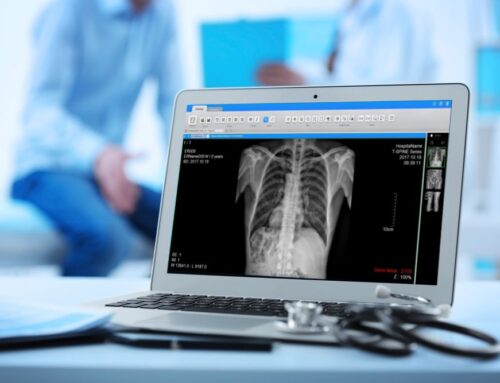Mammography, Ultrasound and MRI
There are times in a patient’s life when she may need a comprehensive radiology breast assessment: mammography, ultrasound, and MRI. Typically all three type of exams are only required if there is a potential breast issue which needs close and extended examination. Let’s take a look at the common routine for these 3 tests, and discuss their strengths, purposes, and aims.
Ultrasound Helps Detect Lumps
Generally, ultrasound is the first breast test one might undergo. If a routine breast exam–whether completed by yourself or by a physician–indicated signs of lumps or abnormalities, an ultrasound is the typical scan we would first use. The ultrasound is a painless and noninvasive procedure which uses sound waves to produce images of the body’s interior. When a lump has been detected, an ultrasound can help determine the density of the mass, helping to indicate whether the mass is solid, with the potential to be a tumor. Breast ultrasound is the most common breast exam for young women or those who should avoid radiation.
Combining the Modalities: Mammography and Ultrasound
For women over the age of 40, an ultrasound is generally performed alongside mammography, as the combined tests produce more accurate results. Mammography uses XRAY technology and brief compression to obtain imaging of the breast tissue. Mammograms tend to produce more accurate and detailed images than ultrasound alone, helping give a better picture of what’s going on within your breast. The two scans, when utilised concurrently, have a cancer detection rate of 85%.
Comprehensive Breast Exams
If necessary for a patient, offers our comprehensive breast assessment, which includes mammography, ultrasound, MRI, and biopsy. MRI is another scan option which can aid in diagnosis. MRI uses radiation-free technology consisting of magnets and radio waves for detailed image “slices” of your body from various angles. MRI is not a replacement for mammography, but is rather an additional mode which helps the radiologist obtain information which may not be accessible through ultrasound or mammography.
The Patient is the Priority
Comprehensive breast assessments have proven extremely effective in detecting cancer or other breast abnormalities. The combination of technologies allows the radiologist a variety of images and tools to use as resources in performing a diagnosis and recommending a treatment and course of action.
Our first priority is patient care and comfort. As compassionate radiologists, we know that breast examination can be an emotional and frightening procedure for many women. Our utmost attention and focus goes to providing outstanding care, recommending the right procedures, and emphasising noninvasive resources and testing first.
What is a radiographic examination of the breast?
What is a mammogram? A mammogram is an X-ray examination of the breast. It is used to detect and diagnose breast disease in women who either have breast problems, such as a lump, pain, or nipple discharge, as well as for women who have no breast complaints.
How do you prepare for a diagnostic mammogram?
Try to avoid the week just before your period. On the day of the exam, don't apply deodorant, antiperspirant, powders, lotions, creams, or perfumes under your arms, or on or under your breasts. Some of these contain substances that can show up on the x-ray as white spots.

